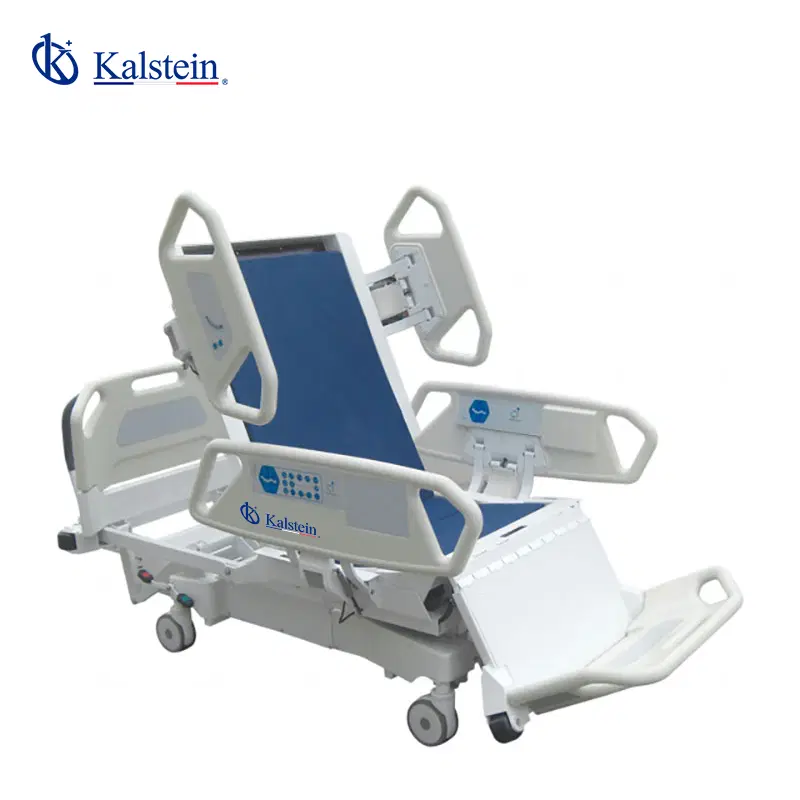In the field of pediatrics, technological advances and innovations in laboratory equipment and medical devices are crucial to ensuring the safety and well-being of the youngest patients. One of the most notable trends in recent years has been the development and refinement of the steel baby crib in the pediatric medical line.
This article examines the latest trends in this field and how the steel baby crib aligns with these innovations, providing a safe and efficient environment for newborns.
We understand that you need equipment that delivers maximum value to your laboratory. We invite you to visit https://kalstein.de/category-product/medical-line/hospital-bed/, to immerse yourself in our universe of cutting-edge technology equipment. Our prices are competitive and accessible, we combine the convenience of online shopping with the guarantee of an exceptional product. Because you deserve the best, we create and offer top-tier laboratory equipment. Make your choice today, where science comes to life. https://kalstein.de/
Innovations in Pediatric Laboratory Equipment
The pediatric environment requires specialized equipment that is safe and effective for the most vulnerable patients. In this context, steel baby cribs have emerged as an advanced solution, standing out for their durability and ease of cleaning. These cribs not only meet strict sanitary regulations but also incorporate advanced technologies such as integrated monitoring systems and ergonomic adjustment mechanisms.
Integrating innovations in laboratory equipment into steel baby cribs allows for constant and precise monitoring of the baby’s vital signs. This is essential for early detection of any anomalies in their health status. Additionally, modern cribs are equipped with hypoallergenic materials and antimicrobial surfaces, significantly reducing the risk of hospital-acquired infections.
Developments in Medical Devices for Neonates
Recent developments in medical devices have directly influenced the design and functionality of steel baby cribs. The incorporation of smart sensors and connectivity systems has enabled healthcare professionals to monitor neonates in real-time, even from remote locations. This capability is crucial in emergency situations where a rapid response can make all the difference.
Furthermore, steel baby cribs now include features such as controlled temperature systems and humidification, creating an optimal environment for the neonate’s development. These developments not only improve the quality of care but also offer peace of mind to parents, knowing their children are in a safe and controlled environment.
Durability and Safety in Steel Crib Design
Durability is one of the main advantages of steel baby cribs. Unlike other materials, steel offers superior resistance to wear and deformation, ensuring a long service life for the equipment. This aspect is especially important in hospital settings, where constant use and the need for frequent disinfection can quickly deteriorate other types of cribs.
Safety is also a critical factor in the design of steel baby cribs. Manufacturers ensure that these cribs comply with the strictest international safety standards for children. This includes the use of adjustable railings and safety locks to prevent accidental falls, as well as wheels with brakes that guarantee the crib’s stability at all times.
Ergonomics and Comfort for Healthcare Staff
The ergonomic design of steel baby cribs benefits not only the patients but also the healthcare staff who use them. Modern cribs are designed to facilitate access and handling of the baby, reducing physical effort and the risk of injury for caregivers. This is particularly important in neonatal intensive care units, where staff need to perform delicate and repetitive procedures.
The ease of height and position adjustment is another highlighted feature of steel baby cribs. This allows healthcare professionals to adapt the crib to their specific needs, improving the efficiency and effectiveness of the care provided. Additionally, these cribs often include integrated storage compartments to keep necessary equipment and supplies within reach, optimizing space and organization in the hospital environment.
Environmental Impact and Sustainability
Today, sustainability is a key factor in the development of new medical equipment. Steel baby cribs align with this trend by being highly recyclable and having a lower environmental impact compared to other materials. The steel used in these cribs often comes from recycled sources, contributing to waste reduction and the conservation of natural resources.
Moreover, the durability of steel cribs reduces the need for frequent replacement, which not only decreases long-term costs but also minimizes the environmental impact associated with the production and disposal of medical equipment. Hospitals and health centers that adopt these sustainable practices benefit the environment and can also enhance their image and reputation within the community.
Adaptability and Cutting-Edge Technology
Adaptability is a fundamental feature of steel baby cribs. These cribs are designed to be compatible with a wide range of medical devices and monitoring equipment, allowing hospitals and clinics to upgrade their systems without needing to replace the cribs. This flexibility is crucial in a constantly evolving medical environment where technologies advance rapidly.
Additionally, incorporating cutting-edge technology into steel cribs, such as integrated monitoring systems and smart alerts, provides a higher and more personalized level of care for each patient. These systems allow healthcare professionals to receive immediate alerts about any changes in the baby’s condition, facilitating quick and effective intervention when necessary.
Conclusion
The latest trends in steel baby cribs in the pediatric medical line highlight the importance of innovation and technology in caring for the youngest patients. From the durability and safety of the design to the integration of advanced medical devices and environmental sustainability, these cribs represent a significant advancement in pediatric care.
Developments in laboratory equipment and medical devices have allowed for the creation of safer, more efficient, and adaptable cribs, improving both the quality of care and the experience of healthcare staff. As we continue to advance in the field of pediatric medicine, steel baby cribs will play a crucial role in protecting and caring for our smallest patients.

